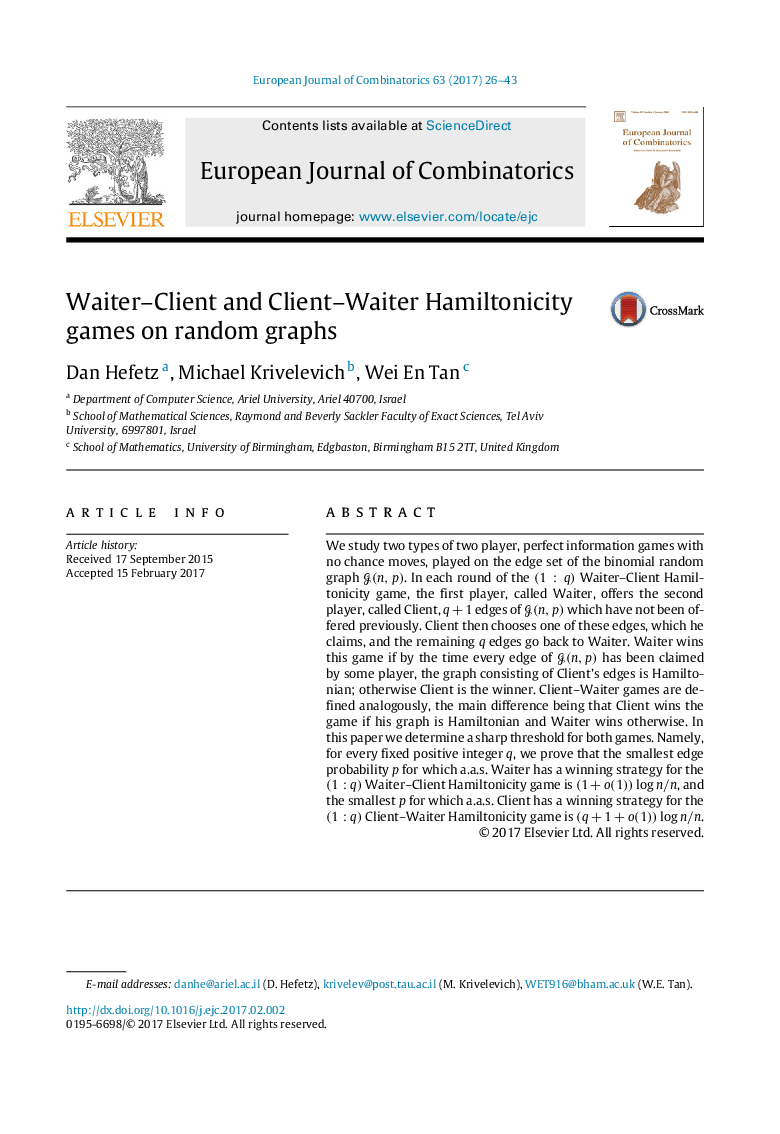| Article ID | Journal | Published Year | Pages | File Type |
|---|---|---|---|---|
| 5777379 | European Journal of Combinatorics | 2017 | 18 Pages |
Abstract
We study two types of two player, perfect information games with no chance moves, played on the edge set of the binomial random graph G(n,p). In each round of the (1:q) Waiter-Client Hamiltonicity game, the first player, called Waiter, offers the second player, called Client, q+1 edges of G(n,p) which have not been offered previously. Client then chooses one of these edges, which he claims, and the remaining q edges go back to Waiter. Waiter wins this game if by the time every edge of G(n,p) has been claimed by some player, the graph consisting of Client's edges is Hamiltonian; otherwise Client is the winner. Client-Waiter games are defined analogously, the main difference being that Client wins the game if his graph is Hamiltonian and Waiter wins otherwise. In this paper we determine a sharp threshold for both games. Namely, for every fixed positive integer q, we prove that the smallest edge probability p for which a.a.s. Waiter has a winning strategy for the (1:q) Waiter-Client Hamiltonicity game is (1+o(1))logn/n, and the smallest p for which a.a.s. Client has a winning strategy for the (1:q) Client-Waiter Hamiltonicity game is (q+1+o(1))logn/n.
Related Topics
Physical Sciences and Engineering
Mathematics
Discrete Mathematics and Combinatorics
Authors
Dan Hefetz, Michael Krivelevich, Wei En Tan,
